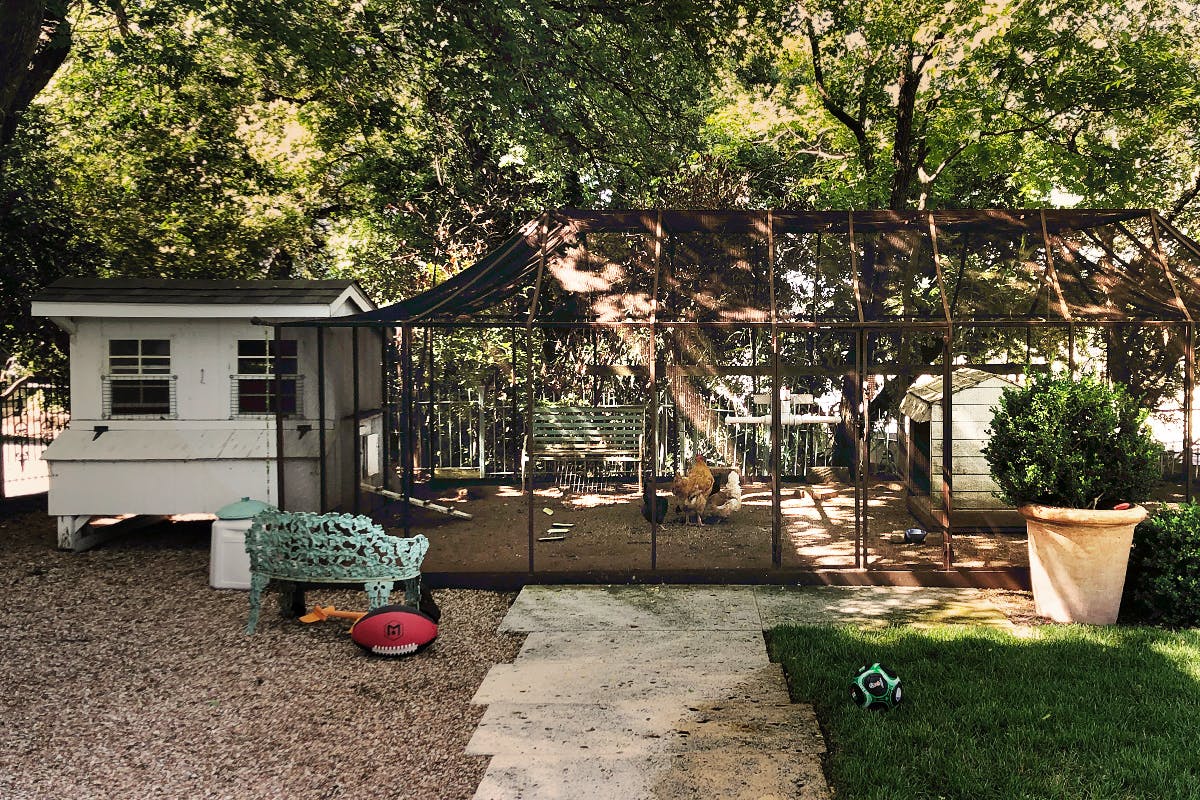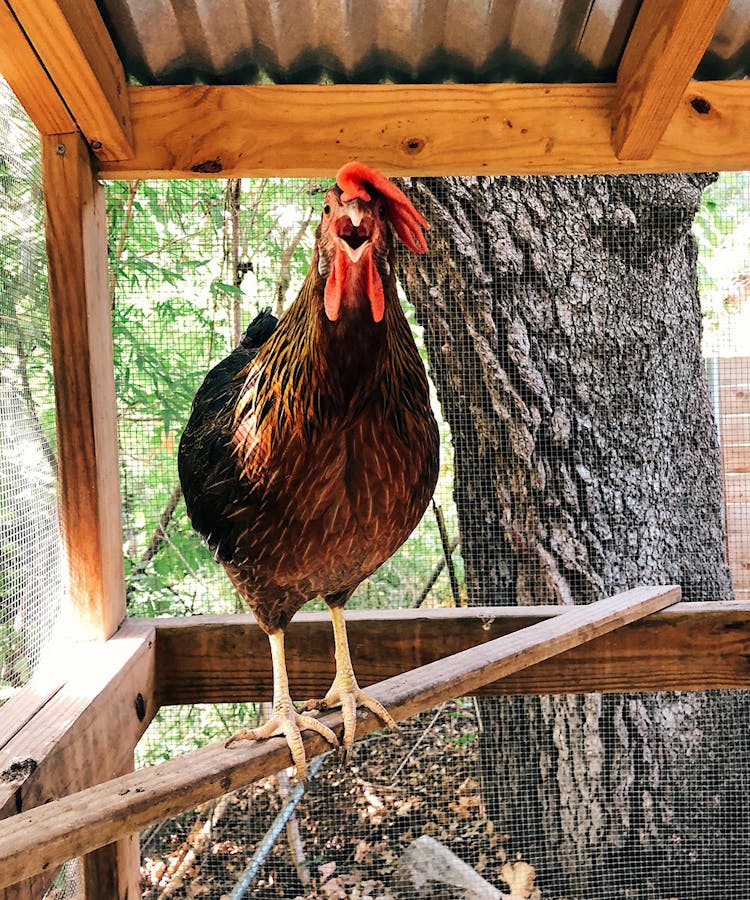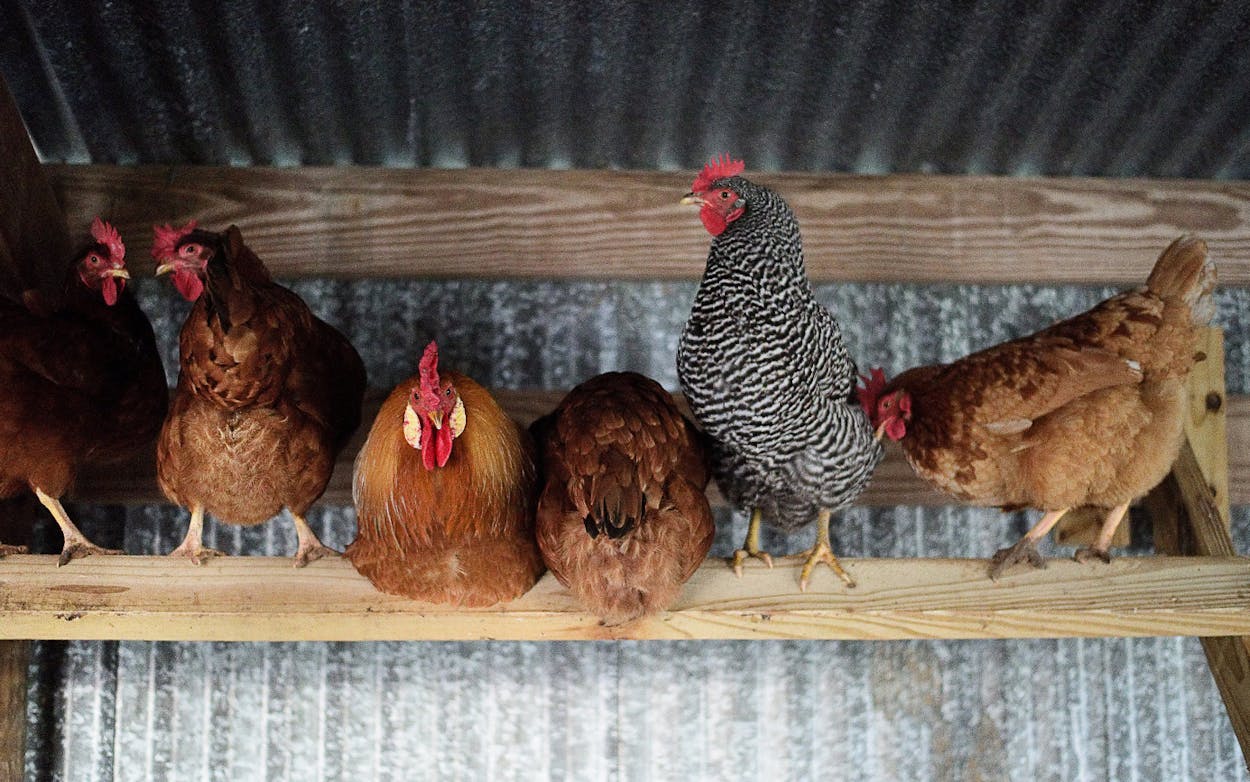Tuesdays and Thursdays are baby chick days at Callahan’s General Store in East Austin. At 9 a.m., employees unload stacks of cardboard boxes filled with tiny peeping birds. By noon, when the chicks go on sale, a line of customers waiting for curbside pickup often snakes around the store’s front porch and into the parking lot. During the early weeks of the coronavirus pandemic in mid-March, demand was so high that the staff had to improvise a ticket system. “We were giving everybody a number and limiting the number of purchases,” says Charley Wilson, the farm store’s president and general manager. “It’s been a very interesting and dramatic increase, to say the least.” Sales of adult chickens are triple what they were last spring, and chicken feed is also flying off the shelves. All this despite the fact that sales of other items, such as Western clothing and hardware supplies, are down by 40 percent.
It’s a similar story at Ideal Poultry in Milam County, where chicken sales have spiked by 50 percent. Located in the small town of Cameron, the breeding farm is the country’s largest supplier of backyard chickens, shipping five million birds annually to all fifty states and Puerto Rico. “Our hens can’t produce enough eggs to keep up,” says Kevin Crouch, wholesale sales administrator. “I’m calling around to all the other hatcheries, seeing if we can get birds from them. Yesterday we were about one thousand chickens short.”
The trend is intuitive. With eggs hard to come by or exorbitantly priced at grocery stores, and with all the extra time spent being, er, cooped up at home during lockdown, more and more Texans are raising backyard chickens. The simple chores that come with chickens—feeding the hens, gathering eggs, and cleaning the coop—are also a good way to keep idle kids busy. “Since the kids aren’t in school, we’re seeing a higher number of these same customers involving their children,” Wilson says.
It’s not just Texans—hatcheries nationwide are reporting an unprecedented surge in demand. “People are panic-buying chickens like they did toilet paper,” an Iowa hatchery’s vice president told the New York Times.
Instead of panicking and winging it, consider if chickens are right for you. Those just starting out face an eggstensive (sorry) list of decisions. Should you buy chicks or pullets (young hens)? How many hens do you need? What about a rooster? Buy a prefabricated coop, or build your own? Fear not: Texas Monthly convened a virtual roundtable to discuss our best tips for newcomers to this fun and entertaining hobby. News and politics editor Forrest Wilder, art director Victoria Millner, senior editor John Spong, and associate digital editor Rose Cahalan, all seasoned chicken-keepers, share their advice below.
Rose: What do you wish you’d known when you started out with chickens?
Victoria: There are a lot of predators. Snakes, raccoons, all kinds. It’s normal to lose hens to them. We’ve reinforced the coop each time, but it happens. We wrangled a snake out of there a couple days ago.
Forrest: We’ve also lost chickens to hawks and loose dogs in the neighborhood. After a lot of trial and error, we have a good setup now with a fully enclosed run. Don’t half-ass the coop when you’re getting started, because that’ll get them killed, and you’re going to eventually have to build a Fort Knox. There are an infinite number of DIY plans online.
John: One night when our little boys were very young, I was walking up the stairs to go bathe them and looked out the window to see a fox on top of the rooster. The hens are really dumb, and they were just sitting there waiting for the fox to get done with the rooster and then eat them. I go out into the yard, and it’s just filled with feathers. The rooster’s lying there, not looking good. We got a vet out—no one has told me how much we spent on vet bills, but the rooster is still with us.

Victoria: Have you had noise complaints because of the rooster? They crow all day, not just at the break of dawn.
John: There was one complaint from a neighbor, and we started giving him eggs. That solved the problem.
Forrest: Before you get chickens, ask yourself what your reason is. Is it for eggs, meat, or to have a pet? Some breeds are good layers, others are good for eating, others are both. If you see them as pets, be prepared to spend way more money than you’re going to get out of them. Alternately, be okay with death. I wouldn’t take a rooster to the vet. We don’t give them names. They’re weak-ass creatures, and they don’t live very long even under good conditions.
Rose: If you have kids, it might be a good way to teach them about mortality.
John: It is. We’ve been able to teach the kids all about life and how things behave. They’re learning the concept of a mother hen, a pecking order …
Rose: Pecking order is a real thing!
Victoria: We turned our first rooster into fried chicken, which was a learning experience. I wouldn’t do it again, but one time, to understand where your food comes from, it’s interesting. It’s tedious and a lot of work, though.
Forrest: It’s not worth it when you can go to H-E-B and buy a whole chicken for $8. We have three hens and a rooster right now. Because they’re in their prime laying age, we’re getting just the right number of eggs [a little less than one egg per chicken per day].
Rose: We’ve found chicken-keeping to be a pretty low-key hobby overall–maybe a couple hours of work per week once you get the hang of things.
Victoria: It’s fairly minimal, but there are chores you’ll have to do regularly: cleaning out the coop, putting in diatomaceous earth to keep out the bugs, powdering the hens if they get mites.
John: Find a local store that you can go to as a resource. At one point, somebody kicked the beak off the rooster, which we thought was a terrible thing. We called Callahan’s, and they told us, ‘No, the beaks grow back, don’t worry.’ They’re really sweet and patient when you call.
Victoria: Tractor Supply [a chain with many locations] is good, too.


Forrest: You’ll have to decide whether to get baby chicks or pullets. I would say skip the chicks and go straight to pullets. It’s cost-effective—they’re around $15 apiece—and they’re just about ready to lay eggs.
Victoria: On the other hand, you could argue that raising chicks is the fun part, especially for kids. All you really need is a heat lamp and a cardboard box. And the hens I got as chicks are more tame as adults, because I handled them more.
Forrest: That’s a really good point. If you’re getting them primarily as pets, yes, get the chicks. Also, sometimes people seem to think you can put them in the garden and they’ll help weed or something—no. They will eat everything in the garden and tear the living hell out of your yard.
Rose: Any final thoughts?
Victoria: They don’t love you like a dog does, but they’ll follow you around the yard because they know you bring them food. They can be fun, dumb little weird companions.
John: It’s a good time. It’s just fun to go out there with some frozen watermelon or whatever—they love frozen watermelon—and say, ‘Hey, girls, how ya doin’?”
- More About:
- Critters








